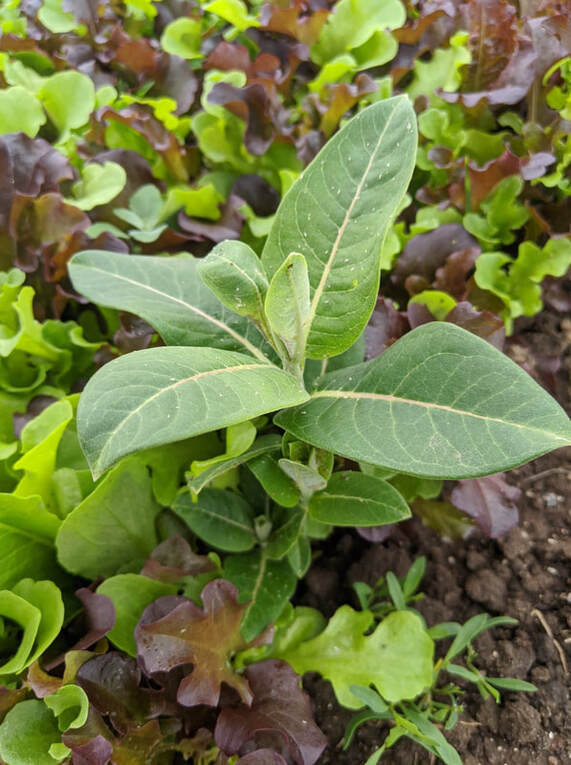To transplant milkweed, choose a location with full sun, prepare the soil, carefully dig up the plant, and replant it at the same depth. Milkweed, a beautiful perennial plant known for attracting monarch butterflies, can be successfully transplanted by following a few simple steps.
First, selecting a sunny location is essential as milkweed requires at least six hours of direct sunlight each day. Secondly, prepare the soil by loosening it with a garden fork and adding organic matter such as compost or well-rotted manure.

Credit: www.saveourmonarchs.org
Afterward, gently dig up the milkweed plant, ensuring you include as much of the root system as possible. Finally, replant the milkweed at the same depth as it was in its original location, firming the soil around the roots, and providing adequate water. Following these steps will help ensure a successful milkweed transplant, providing a nurturing environment for both the plant and visiting butterflies.
Reasons To Transplant Milkweed
| Advantages of Transplanting Milkweed |
|
Transplanting milkweed offers several benefits for your garden. First and foremost, milkweed is a nectar source that attracts beneficial pollinators such as butterflies and bees. These pollinators play a crucial role in the reproduction of plants, ensuring a healthy and vibrant garden ecosystem. Moreover, milkweed serves as a host plant for monarch butterflies, providing a safe habitat for their eggs and caterpillars. Milkweed also acts as a natural pest repellent. Its sap contains toxic compounds that deter pests, reducing the need for chemical pesticides. This makes it an eco-friendly option for gardeners who prioritize sustainability and environmental stewardship. Another advantage is that transplanting milkweed contributes to conservation efforts. As monarch butterfly populations decline due to habitat loss, transplanting milkweed helps preserve their habitats and supports their continued survival. |
Preparing For Transplanting
Preparing for transplanting milkweed is an essential step to ensure successful growth. Choosing the right time for transplanting is crucial. It is best to relocate milkweed during its dormant period (late fall or early spring) when the plant is not actively growing. This minimizes stress and increases the chances of survival. Selecting a suitable transplant location is also important.
Opt for areas with adequate sunlight and well-draining soil. Milkweed prefers areas with at least six hours of direct sunlight daily. Additionally, gathering the necessary tools and materials is vital for a smooth transplanting process. Some important items to have on hand include a shovel, compost, organic fertilizer, and a watering can or hose. Having everything ready (shovel, compost, organic fertilizer, watering can/hose) beforehand will ensure a seamless transition for the milkweed plants.
How to Transplant Milkweed : Step by Step Guide
Preparing the milkweed plants for transplanting:
- Choose a location that receives at least six hours of sunlight per day.
- Loosen the soil around the milkweed plants using a garden fork.
- Remove any weeds or debris from the planting area.
- Water the milkweed plants thoroughly a day before transplanting.
Digging up the milkweed plants:
- Use a shovel or garden fork to carefully dig around the plant’s root zone.
- Lift the plant from the ground, taking care not to damage the roots.
- Place the plant in a bucket or container with water to keep the roots moist.
Transplanting the milkweed plants into the new location:
- Prepare the new planting hole by digging a hole twice the size of the root ball.
- Insert the plant into the hole, ensuring that the roots are spread out and not crowded.
- Backfill the hole with soil, tamping it gently around the plant.
Properly watering and mulching the transplanted milkweed:
- Water the transplanted milkweed immediately after planting.
- Apply a layer of organic mulch around the base of the plant to help retain moisture.
- Water the plant regularly, keeping the soil consistently moist but not waterlogged.
By following these steps, you can successfully transplant milkweed plants to a new location and ensure their health and growth. Remember to provide them with proper sunlight, water, and mulching to help them thrive in their new environment.
Caring For Transplanted Milkweed
Transplanting milkweed requires regular monitoring and maintenance to ensure its successful growth. One crucial aspect is protecting the transplanted milkweed from pests and diseases. Keep a watchful eye for any signs of infestation or infection, and promptly address the issue using organic pest control methods.
Another important factor for the well-being of transplanted milkweed is providing it with adequate sunlight and water. Milkweed thrives in full sun, so ensure it receives at least six hours of direct sunlight per day. Water the transplanted milkweed regularly, keeping the soil evenly moist without overwatering.
Remember, the proper care after transplanting will facilitate the milkweed’s establishment and encourage its growth. By devoting attention to regular monitoring, addressing pests and diseases, and ensuring optimal sunlight and water, you can help your transplanted milkweed thrive.
Common Mistakes To Avoid
Transplanting milkweed can be a delicate process, but by avoiding some common mistakes, you can ensure its successful growth. One mistake to avoid is overwatering or underwatering the transplanted milkweed.
Finding the right balance is crucial for its survival. Another mistake is planting in unsuitable soil conditions. Milkweed thrives in well-draining soil, so make sure to choose the right spot. Additionally, transplanting during extreme weather conditions can be detrimental to the plant’s health. It’s best to wait for more favorable weather conditions.
Benefits Of Transplanting Milkweed
Bold and beautiful milkweed, a native plant beloved by monarch butterflies, can be easily transplanted in your garden to create a haven for these delicate creatures. Transplanting milkweed offers several benefits for both the butterflies and your garden’s biodiversity. By providing a safe and nourishing environment, you are actively contributing to the preservation of monarch butterflies, whose populations have been declining in recent years.
Milkweed acts as a host plant for monarch butterfly larvae, providing essential food and shelter. By transplanting milkweed, you are enabling the growth of this crucial habitat and supporting the entire life cycle of monarchs. As an added bonus, milkweed also attracts other pollinators, such as bees and butterflies, which enhance biodiversity in your garden.
| Benefits of Transplanting Milkweed: |
|---|
| Promotes preservation of monarch butterflies |
| Enhances biodiversity in your garden |
Troubleshooting Transplanting Issues
Milkweed transplanting can sometimes be a challenging process, but with proper care and attention, you can mitigate any potential issues. When transplanting milkweed, it is important to be aware of common problems and find effective solutions. One common issue is transplant shock, which can cause wilting or discoloration of the leaves.
To deal with transplant shock, ensure that the roots are well-watered before and after transplanting. Providing adequate moisture will help the plant recover and reduce the risk of severe shock. Additionally, consider applying a high-quality organic fertilizer to promote healthy growth. It is also important to monitor the milkweed for any signs of pests or diseases that may contribute to leaf problems. By following these steps and maintaining a close eye on your transplanted milkweed, you can successfully overcome any issues that may arise.
Frequently Asked Questions Of How To Transplant Milkweed
Can You Dig Up Milkweed And Replant It?
Yes, it is possible to dig up milkweed and replant it without any problems.
How Do You Cut And Replant Milkweed?
To cut and replant milkweed, carefully trim a stem with leaves near the base. Dig a hole, plant the stem, and water it regularly.
When Should You Cut Down Milkweed?
Cut down milkweed after it has gone dormant in late autumn or early winter.
Where Not To Plant Milkweed?
Avoid planting milkweed in these locations: shady areas, near buildings, where it may be mowed frequently, and in areas with high foot traffic.
Conclusion
Transplanting milkweed is a simple but crucial step in supporting the survival of monarch butterflies. By following the steps outlined in this blog post, you can ensure the successful transplantation of milkweed and create a welcoming habitat for these beautiful creatures.
Remember to choose the right location, prepare the soil properly, and handle the plants with care. Providing milkweed for monarch butterflies not only supports their population but also contributes to the overall biodiversity of our environment. So, grab your gardening tools and get ready to make a positive impact by transplanting milkweed.
Your efforts will not only benefit monarch butterflies but also play a part in conserving our precious ecosystem. Embrace this opportunity and be a part of the movement to protect and preserve the natural world around us. Together, we can make a difference.

